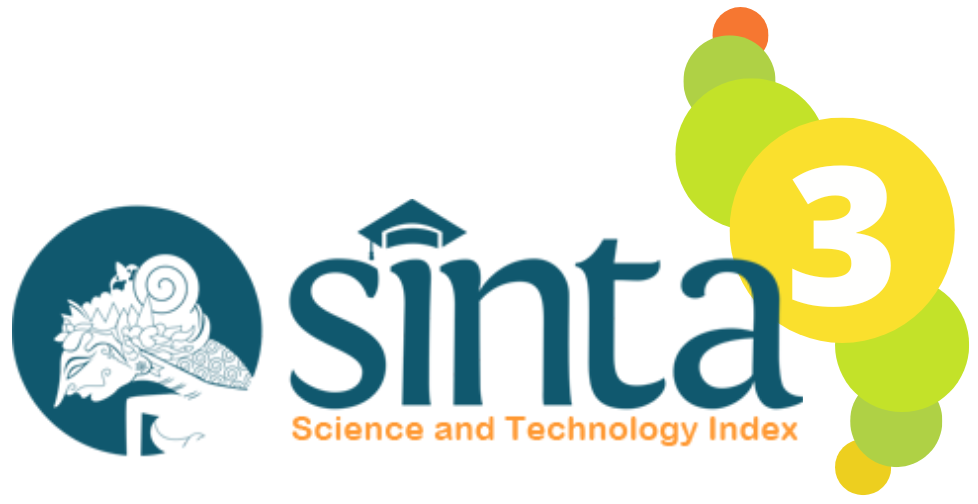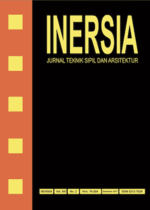ANALISIS KINERJA SIMPANG BERSINYAL (STUDI KASUS JALAN HASANUDDIN-JALAN KAMBOJA, SUMBAWA BESAR)
DOI:
https://doi.org/10.21831/inersia.v16i1.31317Keywords:
derajat kejenuhan, MKJI 1997, simpang bersinyal, tingkat pelayanan simpangAbstract
ABSTRAKMeningkatnya jumlah penduduk di Kabupaten Sumbawa menyebabkan meningkatnya juga pertumbuhan kendaraan pribadi. Pertumbuhan kendaraan pribadi yang tinggi bisa menyebabkan kemacetan salah satunya di Simpang Jalan Hasanuddin-Jalan Kamboja yang sering terjadi tundaan kendaraan pada jam sibuk. Kawasan ini termasuk dalam kawasan yang padat karena merupakan kawasan pusat perdagangan, perkantoran, dan pendidikan. Tujuan penelitian ini adalah untuk menganalisis kinerja tingkat pelayanan persimpangan Jalan Hasanuddin-Jalan Kamboja melalui evaluasi kinerja simpang bersinyal berdasarkan analisis waktu sinyal, kapasitas, derajat kejenuhan dan tingkat pelayanan simpang dengan menggunakan metode MKJI 1997. Berdasarkan hasil analisis yang dilakukan diperoleh tingkat pelayanan simpang berada pada level C (arus stabil tetapi kecepatan dibatasi) yaitu Derajat Kejenuhan untuk Pendekat Barat, Selatan dan Timur sebesar 0,53, 0,55 dan 0,56. Hal ini menandakan bahwa simpang bersinyal tersebut masih cukup baik karena Derajat Kejenuhan masih berada dibawah angka 0,75.
Kata Kunci: derajat kejenuhan, MKJI 1997, simpang bersinyal, tingkat pelayanan simpang
ABSTRACT
The increasing number of population in Sumbawa Regency also increases the growth of private vehicles. High growth of private vehicles can cause traffic jams, one of which is at the Hasanuddin-Cambodia Road Junction which often causes vehicle delays during rush hour. This area is included in a dense area because it is a center of trade, offices, and education. The purpose of this study is to analyze the performance level of the intersection of Hasanuddin Road and Jalan Cambodia through the evaluation of the performance of signal intersections based on the analysis of signal time, capacity, degree of saturation and level of intersection services using the MKJI 1997 method. at level C (current is stable but speed is limited), namely the Degree of Saturation for the West, South and East Approaches of 0.53, 0.55 and 0.56. This indicates that the signaled intersection is still quite good because the degree of saturation is still below the 0.75 figure.
Keyword: degree of saturation, MKJI 1997, signed intersection, road services level
Downloads
Published
How to Cite
Issue
Section
License
Authors who publish with INERSIA journal agree to the following terms:
- Authors retain copyright and grant the INERSIA journal right of first publication with the work simultaneously licensed under Creative Commons Attribution License (CC BY 4.0) that allows others to share the work with an acknowledgment of the work's authorship and initial publication in this journal.
- Authors can enter into separate, additional contractual arrangements for the non-exclusive distribution of the published version of the work (e.g., post it to an institutional repository or edit it in a book), with an acknowledgment of its initial publication in this journal.
- Authors are permitted and encouraged to post their work online (e.g., in institutional repositories or on their website) before and during the submission process, as it can lead to productive exchanges, as well as earlier and greater citation of published work.

INERSIA by https://journal.uny.ac.id/index.php/inersia was distributed under a Creative Commons Attribution 4.0 International License










